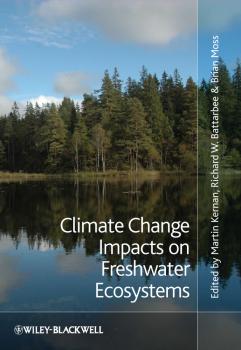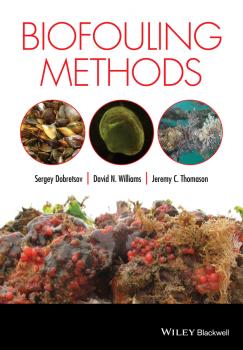Биология
Различные книги в жанре БиологияOxidative Stress in Aquatic Ecosystems
Reactive oxygen species (ROS) are increasingly appreciated as down-stream effectors of cellular damage and dysfunction under natural and anthropogenic stress scenarios in aquatic systems. This comprehensive volume describes oxidative stress phenomena in different climatic zones and groups of organisms, taking into account specific habitat conditions and how they affect susceptibility to ROS damage. A comprehensive and detailed methods section is included which supplies complete protocols for analyzing ROS production, oxidative damage, and antioxidant systems. Methods are also evaluated with respect to applicability and constraints for different types of research. The authors are all internationally recognized experts in particular fields of oxidative stress research. This comprehensive reference volume is essential for students, researchers, and technicians in the field of ROS research, and also contains information useful for veterinarians, environmental health professionals, and decision makers.
Improving Crop Productivity in Sustainable Agriculture
An up-to-date overview of current progress in improving crop quality and quantity using modern methods. With a particular emphasis on genetic engineering, this text focusses on crop improvement under adverse conditions, paying special attention to such staple crops as rice, maize, and pulses. It includes an excellent mix of specific examples, such as the creation of nutritionally-fortified rice and a discussion of the political and economic implications of genetically engineered food. The result is a must-have hands-on guide, ideally suited for the biotech and agro industries.
Improving Crop Resistance to Abiotic Stress
The latest update on improving crop resistance to abiotic stress using the advanced key methods of proteomics, genomics and metabolomics. The wellbalanced international mix of contributors from industry and academia cover work carried out on individual crop plants, while also including studies of model organisms that can then be applied to specific crop plants
Climate Change Impacts on Freshwater Ecosystems
This text examines the impact of climate change on freshwater ecosystems, past, present and future. It especially considers the interactions between climate change and other drivers of change including hydromorphological modification, nutrient loading, acid deposition and contamination by toxic substances using evidence from palaeolimnology, time-series analysis, space-for-time substitution, laboratory and field experiments and process modelling. The book evaluates these processes in relation to extreme events, seasonal changes in ecosystems, trends over decadal-scale time periods, mitigation strategies and ecosystem recovery. The book is also concerned with how aspects of hydrophysical, hydrochemical and ecological change can be used as early indicators of climate change in aquatic ecosystems and it addresses the implications of future climate change for freshwater ecosystem management at the catchment scale. This is an ideal book for the scientific research community, but is also accessible to Masters and senior undergraduate students.
Recent Advances in Polyphenol Research, Volume 2
Recent Advances in Polyphenol Research Volume 2 Edited by Santos-Buelga, Escribano-Bailon and Lattanzio Plant phenolics are secondary metabolites that constitute one of the most common and widespread groups of substances in plants. Polyphenols have a large and diverse array of beneficial effects on both plants and animals. For example they are famous as antioxidants, hormones, constituents of essential oils and natural neurotransmitters. Sponsored by Groupe Polyphenols, this publication, which is the second volume in this ground-breaking series, is edited by Celestino Santos-Buelga, Maria Teresa Escribano-Bailon, and Vincenzo Lattanzio, who have drawn together an impressive list of internationally respected authors, each providing cutting edge chapters covering some of the major topics of recent research and interest. Information included in this important new addition to the series include the following areas: • Flavonoid chemistry of the leguminosae • Chemistry and biological activity of ellagitannins • Chemistry and function of anthocyanins in plants • An update of chemical pathways leading to new phenolic pigments during wine ageing • Metabolic engineering of the flavonoid pathway • The translation of chemical properties of polyphenols into biological activity with impacts in human health • Plant phenolic compounds controlling leaf movement • Biological activity of phenolics in plants Chemists, biochemists, plant scientists, pharmacognosists and pharmacologists, food scientists and nutritionists will all find this book an invaluable resource. Libraries in all universities and research establishments where these subjects are studied and taught should have copies on their shelves.
Biofouling Methods
Biofouling Methods provides a “cook book” for both established workers and those new to the field. The methods included in this important new book range from tried and tested techniques to those at the cutting edge, encompassing the full diversity of this multidisciplinary field. The book covers methods for microbial and macrofouling, coatings and biocides, and ranges from methods for fundamental studies to methods relevant for industrial applications. There is an emphasis on answering questions and each chapter provides technical methods and problem-solving hints and tips. Bringing together a wealth of international contributions and edited by three internationally known and respected experts in the subject Biofouling Methods is the essential methodology reference in the field for all those working in the antifouling industry including those involved in formulation of antifouling products such as paints and other coatings. Aquatic biologists, ecologists, environmental scientists and lawyers, marine engineers, aquaculture personnel, chemists, and medical researchers will all find much of interest within this book. All universities and research establishments where these subjects are studied and taught should have copies of this important work on their shelves.
Insect Outbreaks Revisited
The abundance of insects can change dramatically from generation to generation; these generational changes may occur within a growing season or over a period of years. Such extraordinary density changes or «outbreaks» may be abrupt and ostensibly random, or population peaks may occur in a more or less cyclic fashion. They can be hugely destructive when the insect is a crop pest or carries diseases of humans, farm animals, or wildlife. Knowledge of these types of population dynamics and computer models that may help predict when they occur are very important. This important new book revisits a subject not thoroughly discussed in such a publication since 1988 and brings an international scale to the issue of insect outbreaks. Insect Outbreaks Revisited is intended for senior undergraduate and graduate students in ecology, population biology and entomology, as well as government and industry scientists doing research on pests, land managers, pest management personnel, extension personnel, conservation biologists and ecologists, and state, county and district foresters.
Ecology and Behaviour of the Ladybird Beetles (Coccinellidae)
Ladybirds are probably the best known predators of aphids and coccids in the world, though this greatly underestimates the diversity of their biology. Maximising their impact on their prey is an important element in modern conservation biological control of indigenous natural enemies in contrast to the classical approach of releasing alien species. Ivo Hodek is one of the most internationally respected experts on coccinellids who has researched these insects for his entire career. He has now brought together 14 scientists of international standing to author 12 chapters, making this book the definitive treatment of coccinellid biology and ecology. This volume covers the rapid scientific developments of recent years in the understanding of coccinellid phylogeny, the semiochemicals influencing their behaviour and of molecular genetics. Recent insights in relation to intraguild predation and the assessment of the predatory impact of coccinellids are also covered. Other special features of the volume are the extensive references covering the literature from both East and West and a taxonomic glossary of the up-to-date nomenclature for species of coccinellids as well as of other organisms mentioned in the text. While aimed at researchers, university teachers and agricultural entomologists, the book is readable and appropriate for others who just have a liking for these interesting and attractive insects.
Recent Advances in Polyphenol Research, Volume 3
Plant polyphenols are secondary metabolites that constitute one of the most common and widespread groups of natural products. They express a large and diverse panel of biological activities including beneficial effects on both plants and humans. Many polyphenols, from their structurally simplest representatives to their oligo/polymeric versions (also referred to as vegetable tannins) are notably known as phytoestrogens, plant pigments, potent antioxidants, and protein interacting agents. Sponsored by Groupe Polyphénols, this publication, which is the third volume in this highly regarded Recent Advances in Polyphenol Research series, is edited by Véronique Cheynier, Pascale Sarni-Manchado, and Stéphane Quideau (the current President of Groupe Polyphénols). Like their predecessors, they have once again put together an impressive collection of cutting-edge chapters written by expert scientists internationally respected in their respective field of polyphenol sciences. This Volume 3 provides the latest information and opinion on the following major research topics about polyphenols: Organic chemistry and physical chemistry Biosynthesis, genetics and metabolic engineering The role of polyphenols in plants and ecosystems Health and nutrition Analysis and metabolomics Chemists, biochemists, plant scientists, pharmacognosists and pharmacologists, biologists, ecologists, food scientists and nutritionists will all find this book an invaluable resource. Libraries in all universities and research institutions where these disciplines are studied and taught should have copies on their bookshelves.
Getting Published in the Life Sciences
The goal of this book is to make it easier for scientists, especially those new to scientific writing, to write about their results and to get their manuscripts accepted in peer-reviewed journals. The book covers each step throughout the submission process, from organizing and outlining the manuscript, presenting statistical data and results, to what happens during the in-house manuscript review process and what to do if an article is initially rejected. In addition to providing practical exercises on these topics, the book focuses on helping writers distil their research into concise take-home messages for readers, in order to convey information as clearly as possible to the target audience.









